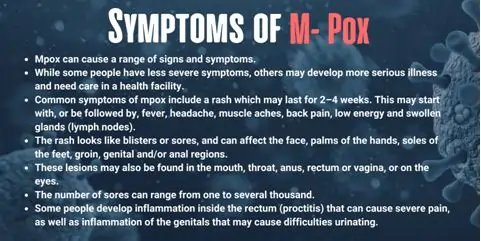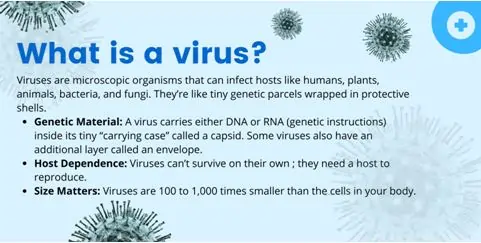Mpox, formerly referred to as monkeypox is an infectious disease which is caused by the monkeypox virus – a member of the Orthopoxvirus group.
Clades of the Virus:There are two distinct clades of the monkey pox virus:
- Clade I: It is a major subclade that delineates into subclades Ia and Ib.
- Clade II: Composed of subclade IIa and IIb.
Mpox Outbreak in Africa Clade I
- Epidemic Origins: An epidemic of a new variant of clade I Mpox (formerly known as monkeypox), or more specifically clade 1b, was reported to have started in Central Africa as early as September, 2023.
- Affected Countries: According to the same information, it has been discovered that nearly 21,200 cases arose by August 2024 with regard to the number of deaths it caused; it accounted for about 600 deaths which are approximately 3 percent mortality rate. Majority of these incidents occurred in the Democratic Republic of the Congo.
- Severity: It is as such clear that while clade I Mpox is widespread, it causes a higher rate of severe infections and has a mortality rate that is higher than clade IIb Mpox.
- Global Impact: Since the monitoring of Mpox starting early released in 2022, more than one hundred thousand cases of Mpox resulting from MPXV clade I and clade II have been recorded in more than 120 countries.
Transmission:
Mpox spreads primarily through close contact:
- Body fluid exposure (for example skin contact including holding hands or intercourse).
- Aerosol productions created from face-to-face communications.
- Infected articles (garments, laundry, etc.).
- Incidences of needle stick in health care organizational environments.
- This mode of transmission has however featured prominently in the recent occurrence of the disease.
- Infected people can also pass the virus to the foetus or baby at the time of delivery or possibly thereafter.
Endemic Areas and Global Spread:
- In the past, Mpoxwas cantered to African nations only.
- However, early May 2022, cases have recorded in non-endemic areas such as Europe and North America.
- It has transmitted through sexual behaviours prevalent in an area; this virus has razed up several parts of the world not previously reported.

Vaccination and Management:
- There is vaccine for Mpox and the vaccination should be weighed among the other methods of public health.
- Personal hygiene has to be well maintained and proper diet and water intake has to be observed.
On-going Concerns:
- Nevertheless, Clade IIb is present all over the Globe.
- The two clades Ia and Ib are responsible for outbreaks in the Democratic Republic of Congo and other African countries.
- Clade Ib has also been identified outside Africa after August 2024.
Symptoms of the Mpox virus may take 6-13 days to show up and can also take a week to three weeks. Here’s what you might experience:
- Fever: Quite possibly the first sign, high fever persists in the body most of the time.
- Headache: That Guest which comes uninvited and is not easy to get rid of.
- Muscle Aches and Backaches: All because apparently, Mpox doesn’t want you to have a comfortable day.
- Swollen Lymph Nodes
- Chills
- Fatigue
The rash associated with Mpox evolves in the following order:
- Macules: These are flat, non-raised, and dis-coloured.”
- Papules: Slightly raised bumps.
- Vesicles: presence of normal size bumps that were filled with a clear fluid.
- Pustules: with yellow fluid like substance.
- Scabs: After the lesions are formed they crust over and fall off when they are healed up.
These rash lesions can appear in various places, including you’re:
- Skin; particularly the face, as this is the most affected area in most of the cases.
- Palms of your hands
- Soles of your feet
- Mouth
- Genitalia
- Eyes

WHO Guidelines on M pox
- Strategic Framework for Prevention and Control: In mid-2024, WHO issued a strategic direction that was expected to strengthen prevention of and response to Mpox epidemic.This framework provides guidance to health authorities, communities, and other stakeholders on:
- Preventing and controlling Mpox virus outbreaks.
- Elimination of transmission of the disease from one person to the other.
- Primary Prevention: preventing spill-over of the virus from the animals to humans.
- Clinical Management and Infection Prevention: The details of clinical management of Mpox and the infection prevention and control measures in the context of Mpox were addressed in June 2022 by the WHO and its member states on a preliminary basis these guidelines were called Interim rapid response guidance.This guideline applies to healthcare and community populations to support the management of Mpox by health facility physicians.
- Surveillance, Case Investigation, and Contact Tracing: The WHO has changed the interim guidance to standardise the term as ‘Mpox’ instead of ‘monkey pox.’These resources are intended to help with assessing possible animal exposure and offer an updated CIF version.
Prevention measures recommended by WHO
WHO and other authorities stress that the Mpox (formerly known as monkey pox) prevention depends on several components:
Vaccination:
- Use of JYNNEOS was recommended for Mpox prevention.
- To get maximum immunity one has to be administered with the two doses.
- If it has been more than 4 weeks after the first dose of the vaccine, one should still go for the second dose immediately.
- If one hasMpox on one or more body parts and have had it before, she/hedoesn’t need the vaccine.
Avoid Close Contact:
- Don’t come near anyone who has a skin lesion that resembles Mpox. It is evident in avoiding contact with people with flu by refraining from touching, hugging, kissing or sexual involvement.
- If you are in an exposure category for Mpox, and have not yet completed two doses of the vaccine, you should think about altering activities that include skin-to-skin contact.
- Especially when one is dancing and swimming where there is little clothing and abruptskin-to skin contact.
Avoid Contamination:
- Avoid contacting the skin lesions or the crusts of Mpox in a patient.
- Refrain from touching clothes, beddings, blankets or any other material that has come in contact with a sick person or an infected animal.
- If you or somebody in your household has Mpox, then you should follow the right process of cleaning and disinfecting your house.
Animal Contact:
- Do not come into close contact with animals that might have the monkey pox virus.
- Other means of contraction include the physical handling of infected animals, which may also come in contact with the virus.
Hand Hygiene:
- Remind yourself about the importance of regular hand washing using soap and clean water especially when handling foods or your face.
- If soap and water are not available you are advised to use alcohol-based hand rub.
Monitor Symptoms:
- Mpox may take 5 to 21 days after the last exposure to become noticeable; it is vital to remain attentive to symptoms for those days after potential exposure to the virus.
- In case of any sign (for instance, formation of rash) it is advisable to visit a doctor.
Mpox Outbreak in India
- Virus Strain: India is facing the outbreak of the Monkey pox and it belongs to the West African clade of the Monkey pox virus.
- Index Case: The first one started on 14 July 2022 when the State Health Minister of Kerala’s, Veena George confirmed a suspected imported case. The patient was later admitted in Thiruvananthapuram, Kerala hospital and was previously travelled to United Arab Emirates.
- Spread: India emerged as the first country in South Asian region to confirm Mpox case. Since then 23 cases have been reported in Indian Territory.
- Local Transmission: The first home-grown case was detected in New Delhi on 24 July. The patient involved was a 42-year-old man, non-smoker with no recent travel history outside the country, and he was kept isolated in Lok Nayak Hospital in New Delhi.
India’s Preparedness
As of now there has been less case of Mpox reported in India. However, the health authorities are taking a proactive approach:
- Sensitizing Health Units: Staff of departments in airport; seaport and ground crossing is being assured.
- Testing Laboratories: India has practically lined up 32 testing laboratories in case of developing a positive case.
- Health Facilities: More preparation is in the process of making on the early detection, isolation, and treatment facilities in health facilities.
Way forward:
- Early Detection and Clear Communication: similar to the case throughout COVID-19 pandemic, early detection is key that India understands well. Isolating and containing Mpox is possible through ensuring that its cases are identified in the early stages.The public should be informed in a clear manner especially on the signs, risks, and ways of contracting Mpox.
- Targeted Vaccination Campaigns: So, as we fight for COVID-19 immunizations, India should aim at selective Mpox vaccinations campaigns. It should be given priority in terms of testing: high risk populations, front liners in health care facilities, and persons who were in contact with individuals highly suspect to have symptoms.
- Contact Precautions and Isolation: Unlike COVID-19 that floats in the air in the form of aerosol droplets, Mpoxspreads on direct touch. Ensuring not to violate a contact precaution measure at any point in time. If someone’s got a suspicious rash, make sure that they are as far away as possible.
- Healthcare Infrastructure Strengthening:It remains for our hospitals to get ready for the Mpox. From the research study, it has become evident that appropriate medicines and good structures are must. It is important that hospitals are prepared for Mpoxprevention.
- Public Awareness Campaigns: Educate people about Mpox prevention like avoid hand contact to infected, avoiding people with infected symptoms or products, and signs of disease.